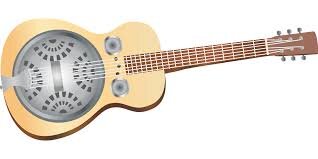The Dobro An American Instrument
/Lately, we’ve been talking about The Mountain Dulcimer and many believe this instrument was invented in the Appalachian mountains. As I was researching that question, I bumped into the origins of the Dobro.
As I read the origins of the Dobros, I was so fascinated that I wanted to share it with you.
Think back – before amps on instruments and microphones - think about barn dances and purely acoustic shows. Musicians of that era and those inclined to play in those venues were always on the lookout for a loud instrument – not because their music needed increased decibels to be appreciated, but because the crowd couldn’t hear a soft instrument. I bought a used fiddle from an old musician and one of his selling points was, “it’s really loud”. Turns out, when you play like me loud isn’t really a great thing – but that’s another story.
The dobro has come to mean a guitar-like instrument with a resonator built into it. However, originally mandolins, fiddles and ukuleles were also produced with these resonators.
The sound of any stringed instrument must resonate against a sound board – in a piano it’s a large piece of brass, in a fiddle or acoustic guitar the sound resonates against a wooden sound board. And as you might guess, the type of wood produces very different sounds – Fender) has a great article here that lists 7 different woods and the variations of sound to be expected from them.
There is, however, a limit to the volume of sound from a wooden sound board. And then there was metal – aluminum to be specific. Mr. George Beauchamp worked as a musician in Vaudeville shows and was looking for a way to amplify his stringed instruments. In the early 1920’s, he asked John and Emil Dopyera to turn their established, innovation skills to creating “resophonic” instruments. In 1927 Mr. Dopyera filed a patent request for a guitar with three aluminum cones with a wooden saddle between them.
Even as amplified instruments became available, the dobro’s unique sound kept it on stages in the hands of country, bluegrass, jazz and blues musicians.




